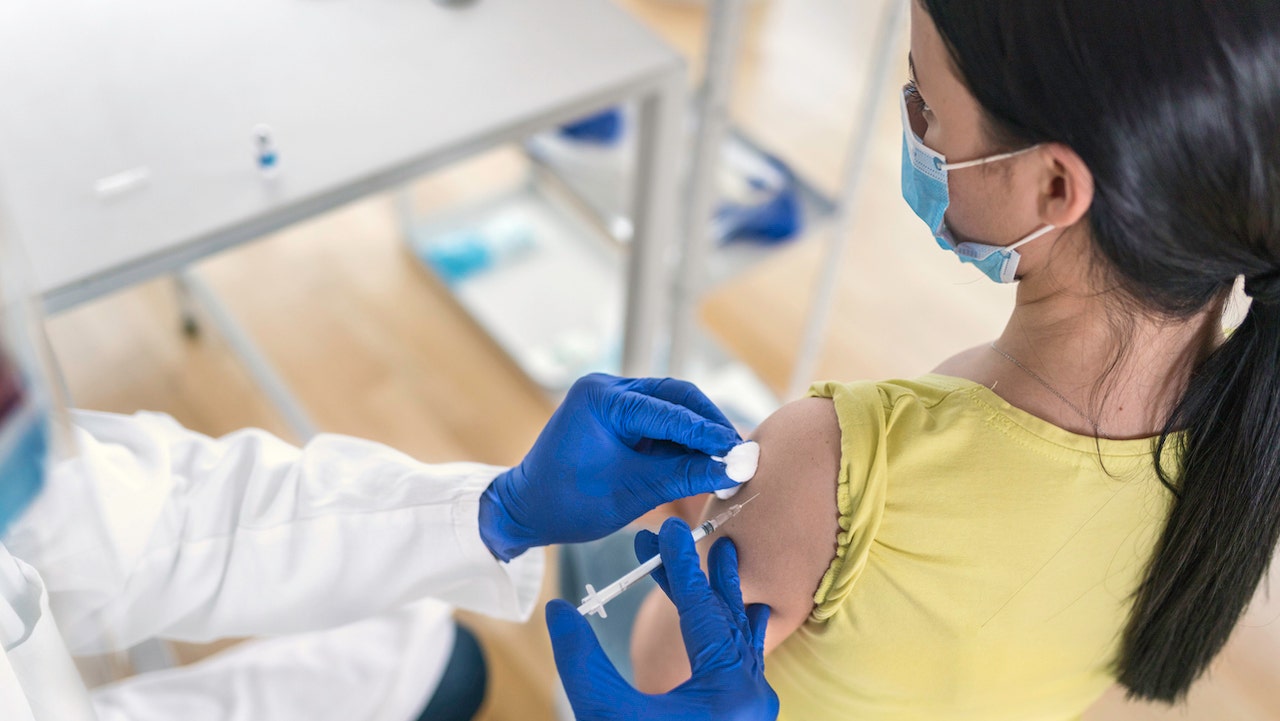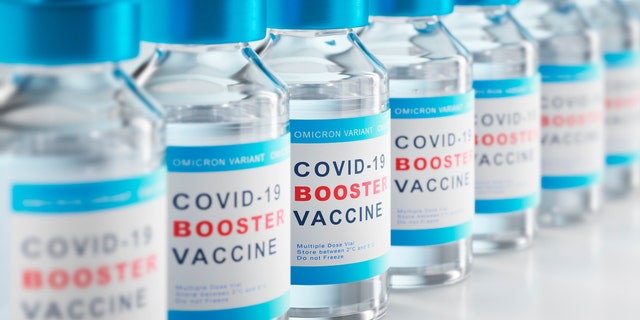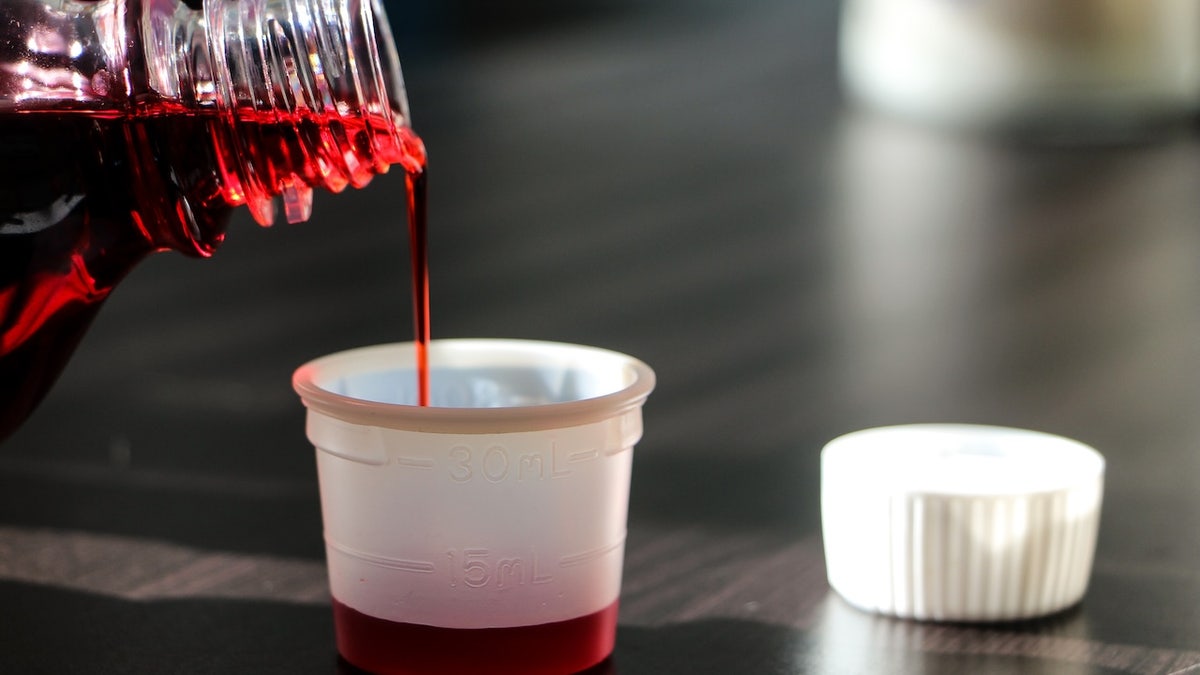Health
Which arm should you use for the COVID vaccine and booster? It really does matter, study suggests

People can choose which arm they’d like to use for COVID vaccine doses — and now a new study suggests one arm may have a better immune-boosting effect than the other.
The research, which was recently published in the journal EBioMedicine, shows that people who used the same arm for the primary vaccination and the booster (which is called ipsilateral vaccination) had a better immune response than those who switched arms (contralateral vaccination).
Immunology scientists from Saarland University in Germany analyzed data from 303 people who received the Pfizer-BioNTech COVID vaccine, none of which had tested positive for the virus before getting vaccinated.
DOCTORS URGE VACCINATIONS AHEAD OF THIS YEAR’S FLU SEASON, WHICH COULD BE ‘FAIRLY BAD,’ EXPERTS SAY
Among the 147 people who got the booster in the same arm as the first dose, 67% of them had what are known as “killer T cells,” which are “cytotoxic” cells that are engineered to attack and destroy virus-infected cells.
But among the 156 participants who received the booster in the opposite arm — only 43% of them had the killer T cells.
People can choose which arm they want to use for doses of the COVID vaccine — and now a new study suggests that one arm may have a better immune-boosting effect than the other. (iStock)
“Our study indicates that ipsilateral vaccinations generate a stronger immune response than contralateral vaccinations,” said researcher Laura Ziegler in a Saarland University press release.
COVID VACCINES AND BOOSTERS SHOWN TO PROTECT PREGNANT WOMEN AND NEWBORNS: ‘TRANSFERRED PROTECTION’
Despite the difference in killer T cells, there was not a greater number of antibodies in the people who got the same-arm vaccines, noted researcher Martina Sester, who is a professor of transplant and infection immunology at Saarland University, in the release.
Antibodies don’t directly attack and destroy the virus as T cells do, the researchers wrote.
Instead, they function by attaching to the virus and preventing it from doing more damage, and also making it easier for other cells to find and attack it.

The research shows that people who used the same arm for the primary vaccination and the booster had a better immune response than those who switched arms. (iStock)
“What’s interesting is that the antibodies in the ipsilaterally vaccinated subjects were better at binding to the viral spike protein,” Sester noted.
More research is needed before drawing general conclusions about the location of vaccine delivery, the release stated.
MOST US ADULTS ARE DECLINING COVID BOOSTERS AS CDC WARNS OF HEALTH RISKS: ‘RELATIVELY LITTLE PROTECTION’
“Further work is required before we know whether the study has implications for other sequential vaccinations, such as flu vaccinations or vaccinations against tropical diseases,” the researchers wrote.
“But it does seem possible that some vaccinations will generate a stronger immune response if the injections are delivered into the same arm.”

“Our study indicates that ipsilateral vaccinations generate a stronger immune response than contralateral vaccinations,” a researcher said. (iStock)
Dr. Marc Siegel, a professor of medicine at NYU Langone Medical Center and a Fox News medical contributor, was not involved in the study but commented on the findings.
“Although it was a small study, it was important, because it looked at T cells and not just the antibody response, so there could be something to it,” he told Fox News Digital.
CLICK HERE TO SIGN UP FOR OUR HEALTH NEWSLETTER
Siegel echoed the researchers’ comments that the immune effect needs to be studied in larger groups — and over a longer period of time — to draw definitive conclusions.
Added Siegel, “It makes sense, however, that the ‘pump is primed’ better by going back to the limb that the body is used to — and that the immune response and inflammation from the shot could be more substantial.”

Health
Treating Other Diseases With Ozempic? Experts Weigh In | Woman's World

Sign Up
Create a free account to access exclusive content, play games, solve puzzles, test your pop-culture knowledge and receive special offers.
Already have an account? Login
Use left and right arrow keys to navigate between menu items.
Use escape to exit the menu.
Health
FDA bans red food dye due to potential cancer risk

FDA looks to ban red food dye
Celebrity fitness trainer Jillian Michaels joins ‘Hannity’ to discuss the possibility of the FDA banning red food dye.
The U.S. Food and Drug Administration (FDA) has officially banned red dye — called Red 3, or Erythrosine — from foods, dietary supplements and ingested medicines, as reported by the Associated Press on Wednesday.
Food manufacturers must remove the dye from their products by January 2027, while drug manufacturers will have until January 2028 to do so, AP stated.
Any foods imported into the U.S. from other countries will also be subject to the new regulation.
RED FOOD DYE COULD SOON BE BANNED AS FDA REVIEWS PETITION
“The FDA is taking action that will remove the authorization for the use of FD&C Red No. 3 in food and ingested drugs,” said Jim Jones, the FDA’s deputy commissioner for human foods, in a statement.
The U.S. Food and Drug Administration has officially banned red dye — called Red 3, or Erythrosine — from foods, dietary supplements and ingested medicines (iStock)
“Evidence shows cancer in laboratory male rats exposed to high levels of FD&C Red No.3,” he continued. “Importantly, the way that FD&C Red No. 3 causes cancer in male rats does not occur in humans.”
The synthetic dye, which is made from petroleum, is used as a color additive in food and ingested drugs to give them a “bright cherry-red color,” according to an online statement from the FDA.

Food manufacturers must remove the dye from their products by January 2027, while drug manufacturers will have until January 2028 to do so. (iStock)
The petition to ban the dye cited the Delaney Clause, which states that the agency cannot classify a color additive as safe if it has been found to induce cancer in humans or animals.
The dye was removed from cosmetics nearly 35 years ago due to potential cancer risk.
CLICK HERE TO SIGN UP FOR OUR HEALTH NEWSLETTER
“This is a welcome, but long overdue, action from the FDA: removing the unsustainable double standard in which Red 3 was banned from lipstick but permitted in candy,” said Dr. Peter Lurie, director of the group Center for Science in the Public Interest, which led the petition effort, as reported by AP.

Nearly 3,000 foods are shown to contain Red No. 3, according to Food Scores, a database of foods compiled by the Environmental Working Group. (iStock)
Dr. Marc Siegel, clinical professor of medicine at NYU Langone Health and Fox News senior medical analyst, applauded the FDA’s ban.
“It was a long time coming,” he told Fox News Digital. “It’s been more than 30 years since it was banned from cosmetics in the U.S. due to evidence that it is carcinogenic in high doses in lab rats. There needs to be a consistency between what we put on our skin and what we put into our mouths.”
“There needs to be a consistency between what we put on our skin and what we put into our mouths.”
Siegel said he believes the FDA’s decision could be tied to the incoming new head of the Department of Health and Human Services, Robert F. Kennedy Jr.
“They knew it would have happened anyway under RFK Jr.,” he said. “It is already banned or severely restricted in Australia, Japan and the European Union.”

The food additive also “drew kids in” to a diet of empty calories and ultraprocessed foods, one doctor stated. (iStock)
The food additive also “drew kids in” to a diet of empty calories and ultraprocessed foods, Siegel added.
“It has also been linked to behavioral issues in children, including ADHD.”
Nearly 3,000 foods are shown to contain Red No. 3, according to Food Scores, a database of foods compiled by the Environmental Working Group.
For more Health articles, visit www.foxnews.com/health
The National Confectioners Association provided the below statement to Fox News Digital.
“Food safety is the number one priority for U.S. confectionery companies, and we will continue to follow and comply with FDA’s guidance and safety standards.”
The petition to remove Red No. 3 from foods, supplements and medications was presented in 2022 by the Center for Science in the Public Interest and 23 other organizations and scientists.
Health
How Yvette Nicole Brown Lost Weight and Got Her Diabetes Under Control

Sign Up
Create a free account to access exclusive content, play games, solve puzzles, test your pop-culture knowledge and receive special offers.
Already have an account? Login
Use left and right arrow keys to navigate between menu items.
Use escape to exit the menu.
-
/cdn.vox-cdn.com/uploads/chorus_asset/file/25822586/STK169_ZUCKERBERG_MAGA_STKS491_CVIRGINIA_A.jpg)
/cdn.vox-cdn.com/uploads/chorus_asset/file/25822586/STK169_ZUCKERBERG_MAGA_STKS491_CVIRGINIA_A.jpg) Technology1 week ago
Technology1 week agoMeta is highlighting a splintering global approach to online speech
-

 Science7 days ago
Science7 days agoMetro will offer free rides in L.A. through Sunday due to fires
-
/cdn.vox-cdn.com/uploads/chorus_asset/file/23935558/acastro_STK103__01.jpg)
/cdn.vox-cdn.com/uploads/chorus_asset/file/23935558/acastro_STK103__01.jpg) Technology6 days ago
Technology6 days agoAmazon Prime will shut down its clothing try-on program
-

 News1 week ago
News1 week agoMapping the Damage From the Palisades Fire
-

 News1 week ago
News1 week agoMourners Defy Subfreezing Temperatures to Honor Jimmy Carter at the Capitol
-
/cdn.vox-cdn.com/uploads/chorus_asset/file/25826211/lorealcellbioprint.jpg)
/cdn.vox-cdn.com/uploads/chorus_asset/file/25826211/lorealcellbioprint.jpg) Technology6 days ago
Technology6 days agoL’Oréal’s new skincare gadget told me I should try retinol
-
/cdn.vox-cdn.com/uploads/chorus_asset/file/25832751/2192581677.jpg)
/cdn.vox-cdn.com/uploads/chorus_asset/file/25832751/2192581677.jpg) Technology3 days ago
Technology3 days agoSuper Bowl LIX will stream for free on Tubi
-

 Business4 days ago
Business4 days agoWhy TikTok Users Are Downloading ‘Red Note,’ the Chinese App















